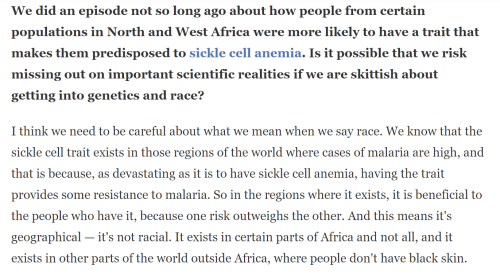Comatricha Nigra

Comatricha nigra
by andysandsphotography
More Posts from Mikrobiotch and Others
Microbiology!

[ID: a banner made of emojis of microscopes, bubbling flasks, and DNA, with different bacteria emojis from a combo emoji scattered between them. /End ID]
Me: here's a fun bacteria fact!
My mom: wow! Horrifying! Please never tell me anything like that ever again!

BRAINLESS BOX JELLIES CAN LEARN BY EXPERIENCE
Mangrove box jellyfish (Tripedalia cystophora) is a small species of box jellyfish, native to the Caribbean Sea and the Central Indo-Pacific, presenting a simple nervous system. But despite tiny, researchers have demonstrated present the ability to learn by association. Although has no central brain, and being the size of the finger-tip, this box jelly can be trained to associate the sensation of bumping into something with a visual cue, and to use the information to avoid future collisions.
In the wild, the Mangrove box jellyfish forage for tiny crustaceans between the roots of mangroves. To mimic this environment, researchers placed the box jellies in cylindrical tanks that had either black and white or grey and white vertical stripes on the walls. To the jellyfish, the dark stripes looked like mangrove roots in either clear or murky water. In the ‘murky water’ tanks, the jellyfish bumped into the wall because their visual system couldn’t detect the grey stripes very clearly. But after a few minutes, they learnt to adjust their behaviour, pulsing rapidly to swim away from the wall when they got too close, this state learning is based on the combination of visual and mechanical stimuli in simple animals with no brain.
The learning process, in difference with vertebrate animals, doesnt occurs in a central neuronal organs, but instead in a small organs named rhopalial nervous system, which act as learning center, in which the jelly combines visual and mechanical stimuli during operant conditioning.
Main image: An adult specimen of the box jellyfish T. cystophora., showing where is located one of the four sensory structures named rhopalia, which includes two lens eyes. Each rhopalium also contains a visual information processing center.
Reference (Open Access): Bielecki et al., 2023. Associative learning in the box jellyfish Tripedalia cystophora. Current Biology.


Lamproderma scintillans by yuweijun98
[🔬 Microscope equipped.]
🧫 e-colin Follow Another day, another dollar trying to infect this host! Rise and grind pathogens 💸
4 μnotes
🦠 cell287776540923 Follow might fuck around and reactivate my oncogenes later
💊 mr-t-cell1989 grins at you violently
2,334 μnotes
🦠 natkiller28937 Follow Who up patrolling the body for cells without MHC Class I molecules 😎😎
🧬 nora-virus Follow You know what? This isn't okay. Pathogens work hard to infect host cells and reproduce. It's the only way for them to perpetuate their own existence. Letting pathogens infect host cells is absolutely necessary to prevent their total extermination. Killing is wrong! Immune cells need to learn to be tolerant of other microbes instead of destroying us just because we want to seize and consume this body's resources.
💊 mr-t-cell1989
KUNG
🦠 natkiller71642 Follow
POW
🩸 neutro-phil2
PENIS
30 trillion μnotes

Mycologists, mostly from Latin America, established the term “funga” five years ago. It refers to the levels of diversity of fungi in any given place, and is analogous to “flora and fauna”, which refer to plants and animals. Unlike flora and fauna, it is not a Latin term but was chosen because it is morphologically similar. “Just like mycelium, mycologically inclusive language will spread unseen but profound [sic], permeating public consciousness (and policy) to acknowledge fungi’s vital role in the grand web of life on and in Earth,” it said. Government agencies in Australia, Brazil, Iceland and elsewhere have picked up on the word. Its creation and use reflects an increasing appreciation of the fungal kingdom and how it connects the plant world through an underground mycelial network.
[...]
Giuliana Furci and the biologist and author Merlin Sheldrake wrote: “Accounts of the living world that do not include fungi are accounts of a world that doesn’t exist. “Fungi have long sustained and enriched life on Earth. We are unthinkable without them, and yet we are only just beginning to understand the intricacies of fungal lives. It’s time we give them the attention they deserve."

It's not the best "microbiology" art, but it has a very interesting background. Two bacteria from two different clinical cases were inoculated on the TSCB medium. This metallic blue spilling bacterium is of course Pseudomonas aeruginosa. The yellow one (positive reaction on TSCB medium) is Vibrio metschnikovii isolated from chronic UTI in a dog. It was an unusual microbiological diagnosis. But what can you do when even your dog has a better holiday than you? Problems with urination (in this dog) began just after returning from the Mediterranean, the owners and the dog intensively used the charms of warm and salty water.
I sometimes think about bacteria growing on (in?) an agar plate and how strange it must be from their perspective. To be taken from your (many times hostile) natural habitat and placed in (on?) an alien landscape made entirely of food that caters perfectly to your dietary needs. You live there, and your descendants thrive there for generations after, and then comes a Cataclysm. And they die in an inferno of steam and pressure, suddenly and unexpectedly.
And you never knew you were the fortunate ones. Your brethren lived their lives in other equally alien worlds, except theirs were tailored to kill them, torture them, or starve them of necessary nutrients. Their torment and your bliss serve a purpose ufathomable to you, a purpose of creatures so vast and unknowable, they might as well be Gods.
I think about bacteria sometimes.


This NPR interview with with Angela Saini about how race science never really left the global scientific consciousness is super interesting! I’m gonna read her book!






Craterellus cornucopioides (trumpet of the dead) and Hygrocybe conica (witch's hat), competing for Most Goth Common Name
-
 tiredbeetlfj1h3lk4sn reblogged this · 1 month ago
tiredbeetlfj1h3lk4sn reblogged this · 1 month ago -
 maggots-in-the-veins reblogged this · 1 month ago
maggots-in-the-veins reblogged this · 1 month ago -
 kittenstrategist liked this · 1 month ago
kittenstrategist liked this · 1 month ago -
 cherrythroat reblogged this · 1 month ago
cherrythroat reblogged this · 1 month ago -
 stfaggot reblogged this · 1 month ago
stfaggot reblogged this · 1 month ago -
 smolcatgod98 reblogged this · 1 month ago
smolcatgod98 reblogged this · 1 month ago -
 smolcatgod98 liked this · 1 month ago
smolcatgod98 liked this · 1 month ago -
 deathmetalfaggot reblogged this · 1 month ago
deathmetalfaggot reblogged this · 1 month ago -
 deathmetalfaggot liked this · 1 month ago
deathmetalfaggot liked this · 1 month ago -
 113028 reblogged this · 1 month ago
113028 reblogged this · 1 month ago -
 midnightcowb0ys liked this · 1 month ago
midnightcowb0ys liked this · 1 month ago -
 iratherb3amisterytoyou liked this · 1 month ago
iratherb3amisterytoyou liked this · 1 month ago -
 lordrahlprotects reblogged this · 1 month ago
lordrahlprotects reblogged this · 1 month ago -
 petticoat5 reblogged this · 2 months ago
petticoat5 reblogged this · 2 months ago -
 tumblingtumblertime liked this · 3 months ago
tumblingtumblertime liked this · 3 months ago -
 cendrillonn liked this · 3 months ago
cendrillonn liked this · 3 months ago -
 spxcesuits liked this · 4 months ago
spxcesuits liked this · 4 months ago -
 a-emma-freeman liked this · 4 months ago
a-emma-freeman liked this · 4 months ago -
 psychedelic-mistress liked this · 5 months ago
psychedelic-mistress liked this · 5 months ago -
 cheries0-days reblogged this · 5 months ago
cheries0-days reblogged this · 5 months ago -
 joculine reblogged this · 5 months ago
joculine reblogged this · 5 months ago -
 burntmoth liked this · 6 months ago
burntmoth liked this · 6 months ago -
 dinosaurwithablog liked this · 6 months ago
dinosaurwithablog liked this · 6 months ago -
 shreddinsl0th reblogged this · 6 months ago
shreddinsl0th reblogged this · 6 months ago -
 newmiu liked this · 7 months ago
newmiu liked this · 7 months ago -
 xen reblogged this · 7 months ago
xen reblogged this · 7 months ago -
 calypsomode liked this · 7 months ago
calypsomode liked this · 7 months ago -
 bitchbrains reblogged this · 7 months ago
bitchbrains reblogged this · 7 months ago -
 ttsuxx liked this · 7 months ago
ttsuxx liked this · 7 months ago -
 randomseldom liked this · 7 months ago
randomseldom liked this · 7 months ago -
 limetimes57 reblogged this · 7 months ago
limetimes57 reblogged this · 7 months ago -
 cuntry-c0ttage reblogged this · 7 months ago
cuntry-c0ttage reblogged this · 7 months ago -
 sunstoneboy liked this · 7 months ago
sunstoneboy liked this · 7 months ago -
 bionic-the-weird-one reblogged this · 7 months ago
bionic-the-weird-one reblogged this · 7 months ago -
 bionic-the-weird-one liked this · 7 months ago
bionic-the-weird-one liked this · 7 months ago -
 molluscamovedtospace liked this · 7 months ago
molluscamovedtospace liked this · 7 months ago -
 molluscamovedtospace reblogged this · 7 months ago
molluscamovedtospace reblogged this · 7 months ago -
 almostdefinitelydying reblogged this · 7 months ago
almostdefinitelydying reblogged this · 7 months ago -
 hiked2death reblogged this · 7 months ago
hiked2death reblogged this · 7 months ago -
 spacepapaya reblogged this · 7 months ago
spacepapaya reblogged this · 7 months ago -
 bigmeter reblogged this · 7 months ago
bigmeter reblogged this · 7 months ago -
 bigmeter liked this · 7 months ago
bigmeter liked this · 7 months ago -
 t74x6n83pq9sck4va0 reblogged this · 7 months ago
t74x6n83pq9sck4va0 reblogged this · 7 months ago
